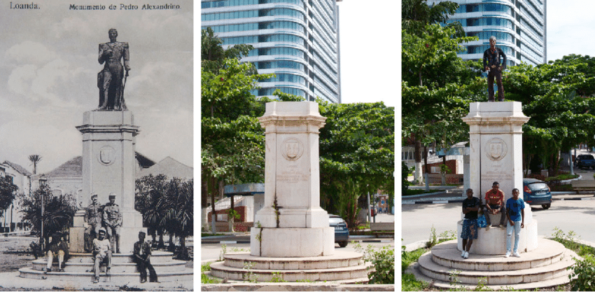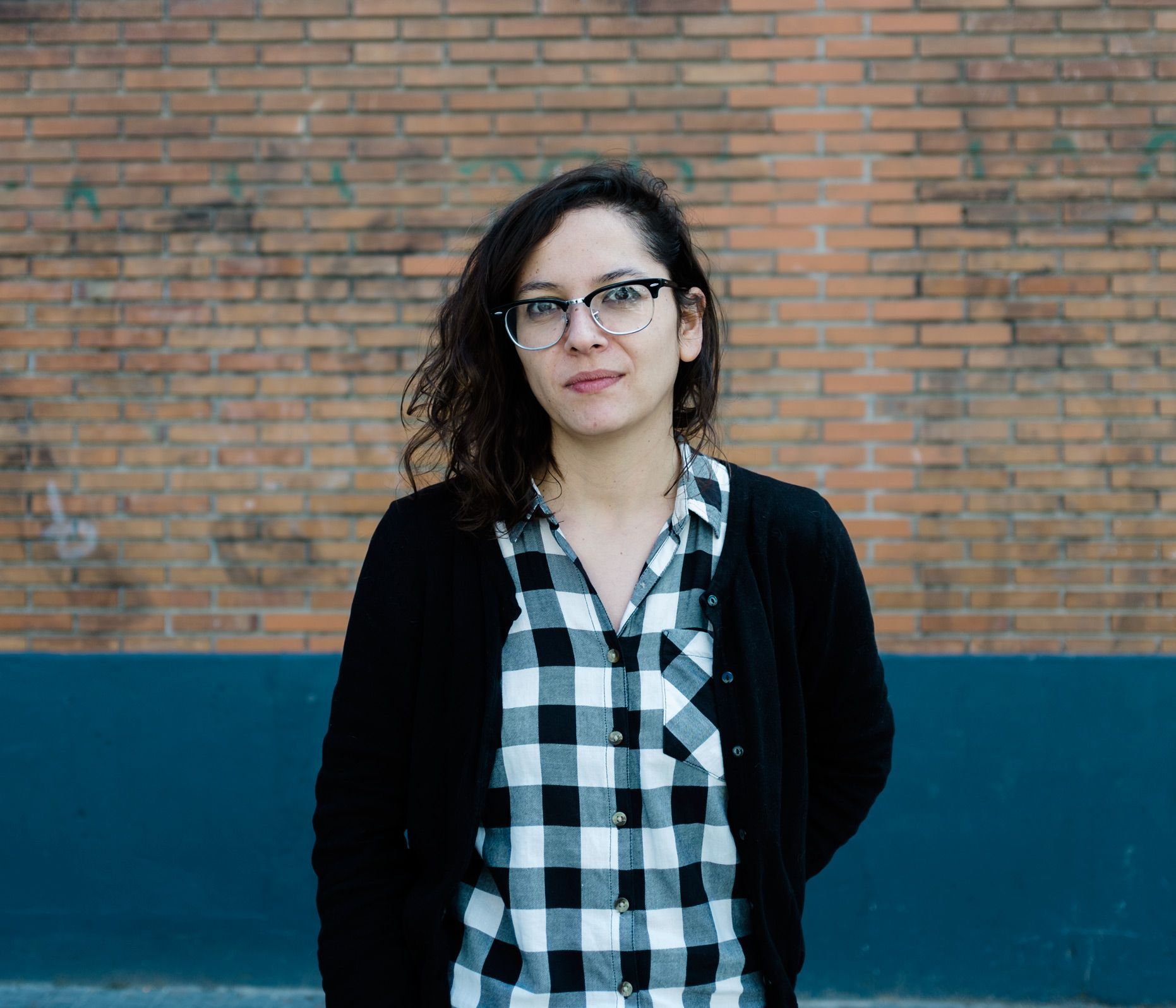Search
To search for an exact match, type the word or phrase you want in quotation marks.
A*DESK has been offering since 2002 contents about criticism and contemporary art. A*DESK has become consolidated thanks to all those who have believed in the project, all those who have followed us, debating, participating and collaborating. Many people have collaborated with A*DESK, and continue to do so. Their efforts, knowledge and belief in the project are what make it grow internationally. At A*DESK we have also generated work for over one hundred professionals in culture, from small collaborations with reviews and classes, to more prolonged and intense collaborations.
At A*DESK we believe in the need for free and universal access to culture and knowledge. We want to carry on being independent, remaining open to more ideas and opinions. If you believe in A*DESK, we need your backing to be able to continue. You can now participate in the project by supporting it. You can choose how much you want to contribute to the project.
You can decide how much you want to bring to the project.

In almost every family, there is someone we never knew but who seems to still be here. Some premature or particularly painful absence, or a disappearance, someone who is talked about or is silenced but who remains, heavy as the time that separates us from that person, their shared memories and feelings filling the air. Those in the family who did not know this person live with an imagined memory, painstakingly constructed from what they overhear from different people in different ways depending on when their told or who is talking. I am no exception. I also have someone like that in my life, and I confess that I think about him a lot, impregnated with the emotions left more by his loss than by his life, which in fact I hardly know anything about. Without a doubt, my family, like all others, would be different without this story, and therefore it is something I inherited but which will surely be forgotten in my generation or the next.
Collective identity and discourses about national identity have much in common with these family ties, or perhaps it is those families that seem like randomly formed micro-states, with their structure, hierarchies and, of course, revolutions. After all, as Benedict Anderson wrote, the nation is also a form of kinship. The Angolan artist Kiluanji Kia Henda, whose father was involved in the fight for his country’s independence, achieved after a long war in 1975, four years before the artist’s birth, reflects in his work on how to balance the past and future to imagine a new postcolonial identity. The ability to imagine the future is just as important as knowing the past, he suggests, and it is necessary to discard the “old” heroes with whom we have been forced to identify and to place on pedestals, real or figurative, the heroes and heroines worthy of the political imagination and the future that we want to project for our generation. Imagination is, moreover, what they first try to mutilate when the (apparently) symbolic is installed to control and legislate. In Homem novo (2012), part of Redefining the Power, a project that seeks to reactivate colonial-era monuments in a kind of reappropriation and as a sign of resistance, three images show this succession of possible temporalities by using a partially removed monument still present in the city of Luanda. In the image on the left of the triptych, a typical black and white stamp or postcard from the colonial era with the statue of Pedro Alexandrino, a Portuguese military and colonial administrator who died in 1850, that is, more or less one-hundred-and-seventy years ago. The pedestal of this monument is currently empty, and this is how it appears in the central photograph, as if questioning who these so-called historical figures are today (ah, that historical figure…) that hardly call the attention of those who pass in front of them but who, at least in this case, was taken down. Nonetheless, his mark remains through the canonical element that aims to canonize those who occupy it. The artist invited artist friends and friends from the field of culture, such as a poet, an activist for LGTBIA + rights and a fashion designer, to pose for the third photograph, ironically substituting military “heroes” for cultural heroes of present-day Angola. In the end, and despite the prevailing idea that statues immortalize the lives of “illustrious” characters, few of the monuments are immortal and fewer of the lives are, just as there are so few monuments with which we agree. This could be because that agreement needs the oblivion of those who pass by on a daily basis, because while they sit at the table they will be talked about, not always in a good way. Oblivion would not be, furthermore, at least for the moment, a valid form of reparation, but rather an agreement by means of inertia, caused by indifference towards the figures that fill the streets but that we do not remember, that we do not know, that do not challenge us, but who remain in public space because they almost always mean something to someone, especially to those who keep them there. That is why the only real reparation is to take them down, in the hope that the next generation will at least not celebrate episodes that they do not remember but that almost always embody, at least in Europe, the worst of who we are.
Kia Kiluanji Henda dedicates much of his work to reflecting on monuments as places of struggle of collective memories, and he combines works on monuments of the past with the realization of new monuments that challenge one of their most characteristic features, that is, the construction and sedimentation of discourses around national identity, preserved today in states and nations that believe they have a culture and a past defined within their borders. Foregoing notions of nation and state, aware that monuments are also extensions of these borders which determine through their imposition on public space who belongs and who does not, he constructs global and trans-Atlantic narratives that connect coasts and cities across the ocean currents that Peter Linebaugh and Markus Rediker compared to the history of The Hydra of Revolution. In a parade of those who will be featured in the monuments of the future, works such as Rusty Mirage (The City Skyline) (2013), inspired by the sand drawings in eastern Angola, or in Plantation (Prosperity and Nightmare), a project in memory of the enslaved people who won a public competition for a monument in Lisbon and which represented a sugar cane plantation, Henda not only questions these borders/monuments but he dedicates them to stories that normally occur far from pedestals. The Lisbon monument, for instance, is located in front of the port where the slave ships docked and is a tribute to the victims of the European history obsessively celebrated in our public spaces in order to, as the artist says, create new possibilities for coexistence.
During the mandate of Governor Ángel Barrera (1906-1907 and 1910-1924), a statue was erected in his honor in the center of Plaza de España de Santa Isabel, the name of Malabo (Equatorial Guinea) during the Spanish colonization, which remained there until October 12, 1968, the day of the country’s independence. In the purest colonial style, at its base, three people “thanked” Barrera for his work, as he looked out at the port. As David Almazán explains, after independence the statue was recovered and was sent to the Arsenal de la Barraca, in San Fernando Cádiz, and no one today who passes by even knows the name of Ángel Barrera. But monuments are stubborn. If they don’t want them in the colonies, we’ll let them survive in the metropolis, and thus some of them remained in Malabo. One day, walking through the Ela Ngema cemetery, I came across the grave and a bust of Father Juanola, a Spanish Claretian responsible for many of the ills suffered by the bubisand who once urged me not to call it genocide (advice that I ignored). Funerary monuments are a separate issue. Above the decomposed body rests a chiseled stone, whose presence is more important that its visibility. We do not know if it is out of respect for the dead or because of its low profile that it remains there, but if it did not return to the metropolis to occupy a ridiculous random place, it is surely due to one of these causes. In reality, we know that “statues also die” and sooner or later they become stones. What happens in the meantime is what matters to us.
We will have to imagine a future not without monuments, but without pedestals, because the time will come when, as in the port of Lisbon, these will not be a tribute to men alone (yes, I said men) who looked down from above at history erasing life as it moved forward, but rather those who emerged as a swarm ruining the feast of the original family-state. The new heroines don’t want a pedestal, because the collective body won’t fit on it.

Inés Plasencia. Researcher, teacher and cultural manager. She is currently an associate professor in the Department of History and Theory of Art at the Universidad Autónoma de Madrid and at Duke University in Madrid. She holds a Master’s degree in Contemporary Art History and Visual Culture and a PhD in Art History and Theory from the UAM with the thesis “Imagen y ciudadanía en Guinea Ecuatorial (1861-1937): del encuentro fotográfico al orden colonial”, which was awarded the Extraordinary Prize. As for her collaborations with cultural institutions, she was part of the research and conceptualisation team of the project “Repensar Guernica” for the Reina Sofía Museum (2015-2017) and curated the virtual photography exhibition “Con tres heridas yo” at the same museum. Her main lines of work are visual studies and colonialism and debates around citizenship from the perspective of contemporary artistic practice. (Photo: Rubén H. Bermúdez)
"A desk is a dangerous place from which to watch the world" (John Le Carré)